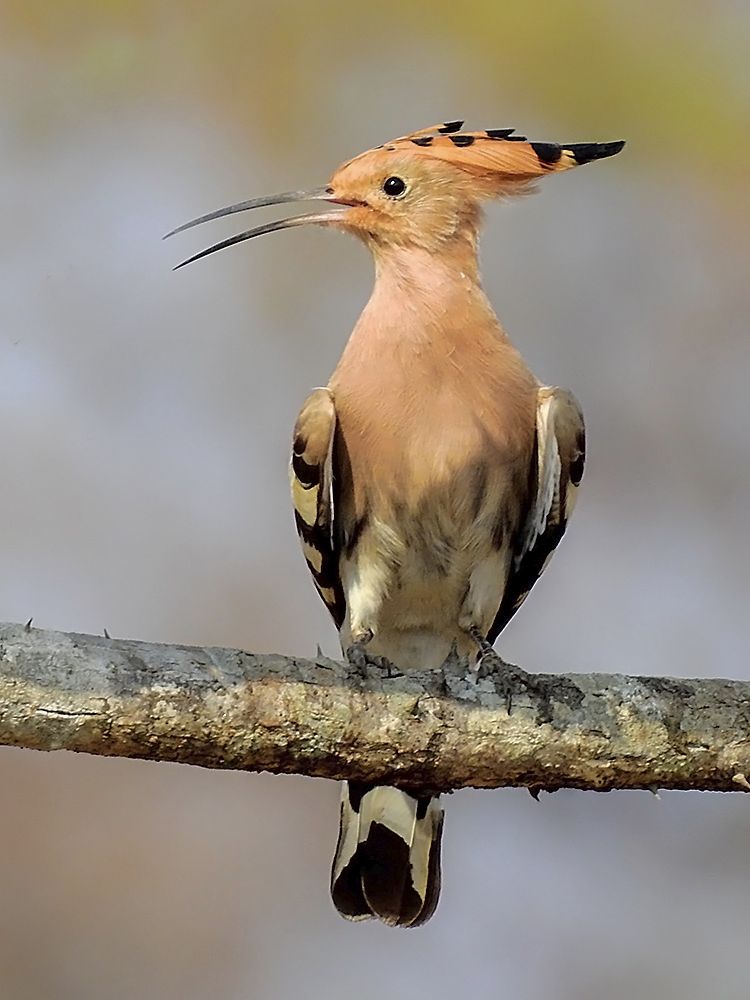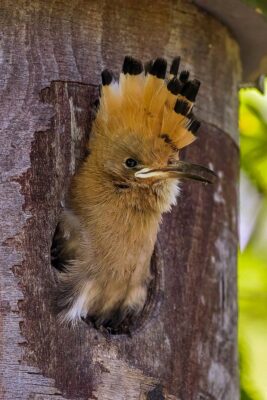
17 September 2024: Day 11, WINGS Spain in Autumn. On the plains east of Seville, then our tour concludes at noon in Seville. Click here to see (generally) where I am today. NOTE: This article was written in August.
Today is our last birding day in Spain and I’ve already seen four hoopoes.
Utterly unmistakable orange bird with zebra-striped wings, a Chinese fan of a crest (usually held closed, but often raised just after landing), and a rapier of a bill. Favors semiopen habitats such as heathland, farmland, orchards, grassy lawns, where it feeds on the ground, probing with its long bill for insects
— eBird Species account: Eurasian hoopoe (Upupa epops)
Hoopoes are large in my imagination — perhaps because of their crests — but they are only the size of American robins though their shape is very different. This video of captive hoopoes in Dubai shows their size relative to a human hand.
Hoopoes were named for their song …
… and are so eye-catching that humans have both revered and feared them. Hoopoes were sacred in Ancient Egypt and a symbol of virtue in Persia yet harbingers of war in Scandanavia and foreshadowers of death in Estonia. Was it the hoopoe’s behavior that prompted these opinions?
Hoopoes nest in cavities where the female lays 2-12 eggs that hatch 24 hours apart in the order they were laid. The nestlings can therefore range in age from 1 to 12+ days old but the youngest don’t last long.

Early warning: Some gruesome news ahead.
A March report at Science.org describes how researchers in Granada Province observed a gruesome behavior in hoopoe families that is quite unusual among birds.
In the first of two studies, Juan José Soler at the Experimental Station of Arid Zones in Spain showed that “hoopoe mothers frequently feed younger chicks to older chicks. And he suspected that hoopoe mothers laid extra eggs with the intention of using the hatchlings as food.”
The second study bore this out. In settings where food was plentiful during egg laying female hoopoes laid more eggs and later used the youngest chicks as food for the older ones. Interestingly, nests with high cannibalism fledged more chicks that those without.
Beyond the strangeness (dare I say horror?) of cannibalism offered by one’s mother is the fact that hoopoes do not have beaks and claws equipped to kill small birds. “That might be why, says Soler, mother hoopoes often grab the unlucky chick and shove it into the mouth of an older chick, which swallows it whole.” — Science.org.: Watch Out! This colorful bird raises a nest of cannibals.
This behavior may sound familiar to those of you who remember the peregrine mother nicknamed Hope who nested at the Cathedral of Learning in 2016-2019. Every spring Hope killed and ate one or two of her chicks and offered them as food to the older chicks. Now that I know of the hoopoe’s unusual behavior, Hope deserves some extra o’s in her name –> Hoopoe.
Read more about the studies at Science.org: Watch Out! This colorful bird raises a nest of cannibals.
p.s. Despite the strangeness, I still like hoopoes.
The Hope comment. 🙂 Very unusual, beautiful bird, safe travels home Kate!
A gorgeous bird with such sad behavior. I immediately thought of Hope. A very informative post, Kate. Difficult, but was happy to learn of the bird.